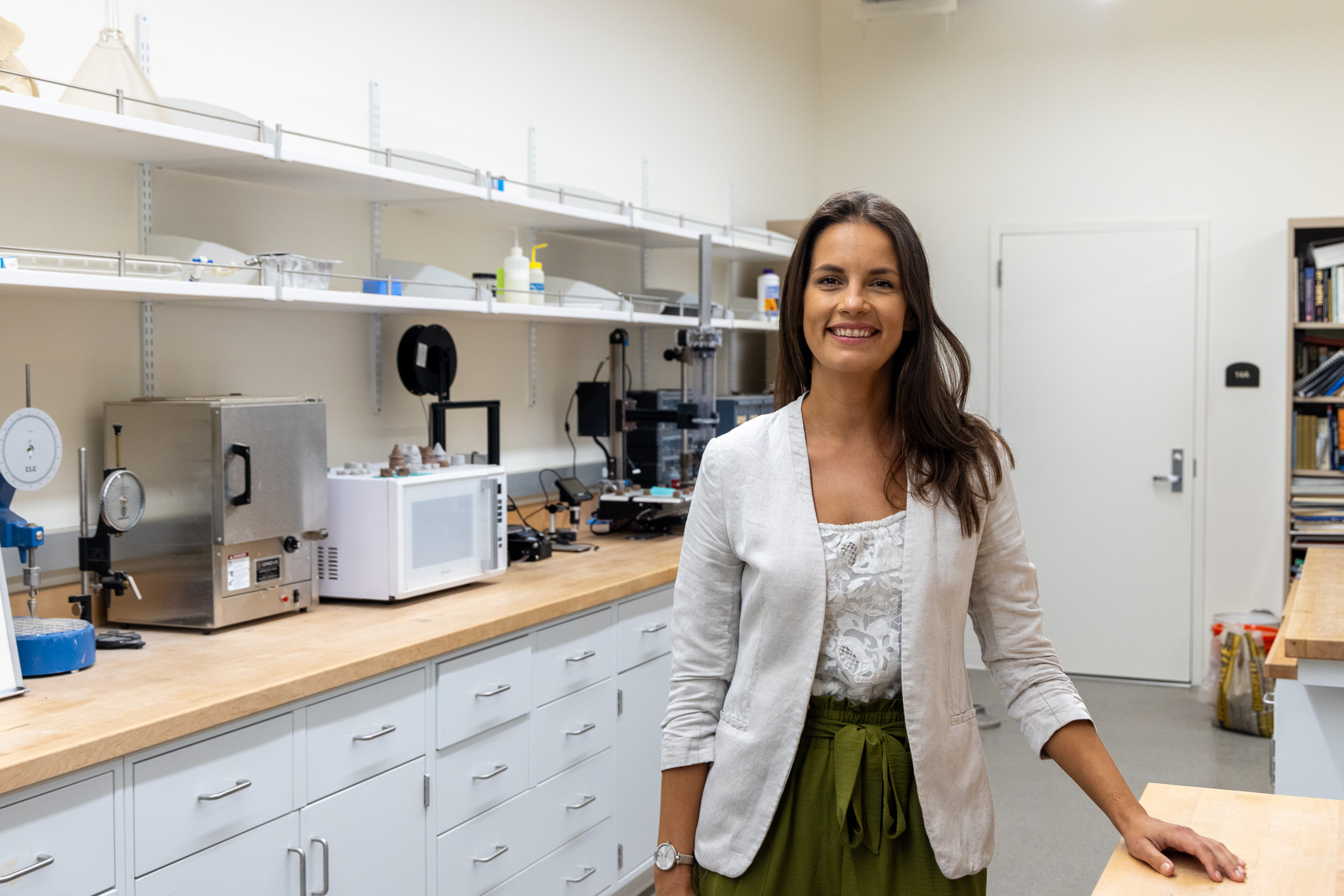Ask a Researcher: Marta Miletić, Ph.D.
Marta Miletić, an assistant professor of Civil, Construction and Environmental Engineering, on how she and her students are helping to make life on Mars possible.

Since the first successful lunar lander in 1966, all spacecraft sent to the moon and Mars have touched down onto fine-grained lunar regolith or Martian soil. Under a NASA grant, Marta Miletić, Ph.D., and her research students, in partnership with New Mexico State University, are working on innovative approaches to use 3D printing to construct sturdy launch and landing pads for permanent space bases.
Q: How would you describe your work and what NASA is asking you to do?
A: NASA has tasked me to come up with different materials and designs of the lunar launching and landing pads. With the upcoming NASA Artemis mission, the U.S. is planning to have a long-term presence on the moon. They’re planning to build a scientific base camp, to put scientists and engineers there, to test the living situations before they move to Mars. We want to make sure that we can go to the same spot back and forth, the same as on Earth. We are trying to develop different additive manufacturing and construction technologies to build in extraterrestrial environments. The idea is to use materials already on the moon and Mars for construction instead of transporting them from Earth.
What are you using here in your lab to replicate the lunar soil?
We partnered up with a couple of quarries in New Mexico, where the rock there has the same mineralogical and chemical composition as the ones from the Apollo missions. So we actually developed our own lunar regolith simulant.
What have you learned so far?
We’ve gained significant insights into the behavior of this material under extreme temperatures and vacuum conditions. However, further investigation is required to assess its durability and resilience once we start printing and manufacturing processes on a larger scale.
Your students must be really jazzed to be working on something like this.
When I ask students, ‘Hey, do you think you can work for NASA?’ They respond, ‘No, NASA is space stuff.’ However, civil engineers are about to become very much needed by the governmental space agencies and private enterprise to build on the moon and Mars. All the preliminary designs are made by rocket scientists and mechanical engineers. There is a critical gap that needs to be bridged to bring the civil and construction workforce into the space.
There’s been talk of permanent moon and Mars colonies for more than 50 years, and you and your students may see the day when it actually happens. How cool is that?
What I like the most is that we are making history.
Do you think you’ll ever personally…
No. I’m made for this Earth.
